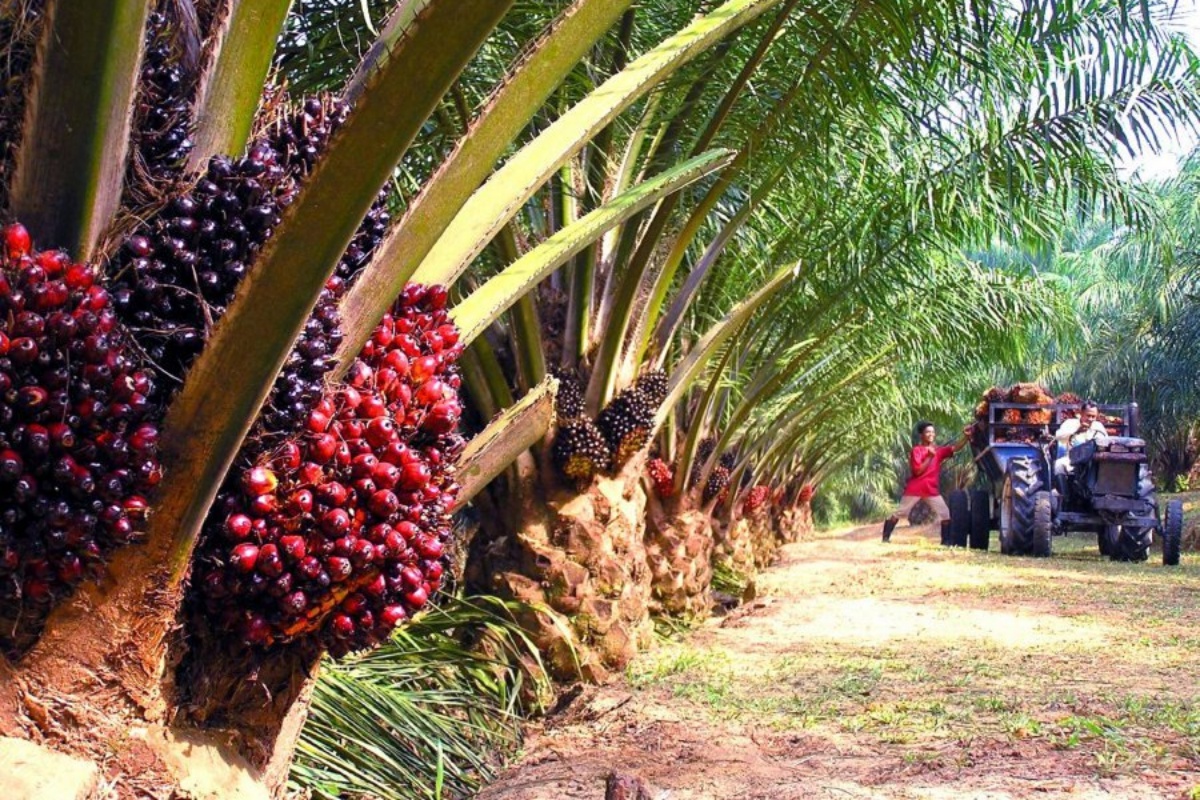
Published by Focus Malaysia, MalaysiaNow, The Vibes, Sin Chew & Bernama, image from Focus Malaysia.
Representing the majority of semi-skilled and low-skilled jobs, youth unemployment has been a prominent problem among the Malaysian youths, particularly severe in Sabah, which is known as the poorest Malaysian state – 19.5% poverty rate in 2019 – and also having the highest unemployment rate in the country – 5.8% in 2019.
Even before the emergence of the COVID-19 pandemic, Sabah recorded 14% youth unemployment rate in 2019. The daily three-digit COVID-19 infections and tightening of movement restrictions in Sabah would lead to more than 284,000 Sabahan youths to be unemployed, according to the Department of Statistics Malaysia (DOSM).
With the second wave of job retrenchment and shutdown of local businesses, the estimated youth unemployment rate in Sabah could rise to at least 20%.
The COVID-19 pandemic also reveals the vulnerability of the service sector as well as the mining & quarrying sector. The closure of international borders and inter-state travel ban had resulted in a drastic drop in international and domestic tourists in Sabah.
Many shopping centres and F&B outlets are relatively empty as only take away and grocery service are allowed during this conditional movement control order (CMCO).
A sharp fall in the global oil price also negatively affected the economic performance of the mining and quarrying sector. The negative effects that resulted from all these have put Sabahan youths into a bleak future.
To diversify the revenue stream, Sabah could reduce its dependence on palm oil by focusing on the development of large-scale agricultural activities.
With the help of green and modern agricultural technology, it would enhance the value of production while providing opportunities for Sabahan youths to work in the renewable sectors.
In addition, the Sabah state government could increase crop diversification and produce high quality agricultural product. Such effort could develop Sabah as an Asian food hub to fulfil huge demands from the major markets such as China, Singapore and Brunei.
To ensure sufficient timber supply, the Sabah state government could also increase the planting of suitable tree species on a large scale by extending Budget 2021’s allocation of RM500m for the Forest Development Loan (PPLH) programme for the timber industry.
With increasing demand for the agricultural and wood-based products, job opportunities among Sabahan youths would be created.
As the industrial sector becomes a catalyst in generating more employment opportunities for the people especially during the implementation of the 12th Malaysia Plan (2021-2025), Sabah could increase investment in Palm Oil Industrial Cluster (POIC) in Sandakan and Lahad Datu, Kota Kinabalu Industrial Park (KKIP) and Sabah Development Corridor.
While generating higher value-added downstream processing activities in the state, Sabahan youths also be employed in these mega infrastructure projects in Sabah.
Moreover, exploration of the downstream industry based on biomass resources from oil palm waste and forestry would be another potential income source to help Sabah becoming an agriculturally based industrial state by 2030, on top of creating new job opportunities among Sabahan youths.
Aside from the federal government’s Penjana and Prihatin stimulus packages, current Sabah state government should continue the initiatives from previous Warisan administration by:
- Emphasising and prioritising youth development in line with the Sabah Youth Development Strategic Plan, 2016-2030;
- Increase youth involvement in high impact economic sectors such as agricultural, digital and cultural sector;
- Organising programme on agricultural entrepreneurship development through the establishment of farming entrepreneurs, recognition of outstanding agriculture entrepreneurs throughout Sabah and implementation of Integrated Agricultural Skills Courses for youth; and
- Continuing Youth Entrepreneurship Aspiration Programme (YEAP) to enable young people to start their business with low start-up capital
Although Budget 2021 revealed that Skim Jaminan Penjanaan Pekerjaan (JanaKerja), MySTEP (Short-term Employment Programme) and apprenticeship programme would provide opportunities for thousands of Malaysian youths to be hired or upgraded with relevant skillsets, it is still unclear on how many Sabahan youths would benefit from the federal schemes.
Therefore, EMIR Research has several policy suggestions for the Sabah state government to consider:
- Ministry of Youth and Sports Sabah could modify the National Apprenticeship Scheme (SPN) that was launched by the federal government on July 22 by partnering with the private sector in Sabah where its youths would have the opportunity to reskill, upskill and cross-skill besides securing a job after completion of the apprenticeship;
- Similarly, Ministry of Youth and Sports Sabah could also modify the MyBelia System launched by the federal government that could indicate job opportunities, skills training, funds and facilities provided by the state government, with the Sabah Youth Council leading this initiative by mobilising local youth organisations to inform Sabahan youths;
- The same ministry in Sabah could also provide vehicles for unemployed Sabahan youths to venture into mobile truck business, thereby sustaining their livelihood and boosting youth entrepreneurship in Sabah;
- Ministry of Rural Development Sabah shall continue implementing MESEJ (Mini Estet Sejahtera) Project – creating more sustainable agricultural development projects, such as one kampung, one industry to generate income among Sabahan youths based in rural areas;
- The ministries of industrial development, rural development, tourism, culture and environment, and agriculture and fisheries could organise a joint meeting and utilise natural resources advantage of the state to create more green jobs for the benefits of its youths. These ministries also could collaborate with industry players so that the skillsets among Sabahan youths would match the current industry needs.
When the state government is attentive to long-standing youth unemployment issue, more job opportunities could be created, thereby empowering more than half of the youth population in the state. They would not be marginalised and in turn, generating socio-economic development for Sabah.
Amanda Yeo is Research Analyst at EMIR Research, an independent think tank focused on strategic policy recommendations based on rigorous research.
刊登在:The Interview & Borneo Today, 照片来源:The Interview.
由于大多数工作以低技能为主,青年失业一直是马来西亚青年所关注的课题。
公认为马来西亚最贫穷的州属,沙巴州的形势更为严峻。除了于2019年创下了19.5%的贫困率,沙巴州同时也创下了全国最高的失业率,为5.8%。
在新冠肺炎来袭之前,沙巴州于2019年创下了14%的青年失业率。每日三位数的新冠肺炎感染和日常活动局限将导致超过28万4000名沙巴青年失业,如马来西亚统计局的数据显示。
第二轮裁员和更多当地企业的倒闭估计将让沙巴青年失业率上升到至少20%。
新冠肺炎也揭露了服务业与采矿业的脆弱。国际边界的关闭和禁止跨州令的重启导致沙巴州的国际和国内游客急剧下降。
由于有条件行动管制令只允许外带服务,许多购物中心和餐饮店的生意惨淡。
全球石油价格急剧下跌也对采矿业带来负面经济冲击。这些迹象让沙巴青年未来更为黯淡。
因此,州政府不应单靠服务业 (2019年占沙巴州国民生产总值的46.1%)和采矿业 (2019年占沙巴州国民生产总值的26.4%),而应着重发展农业和制造业,以重新出发。截至2019年,农业只占沙巴州国民生产总值的16.1%,制造业占7.6%。
为了让收入来源多样化,沙巴州可减少对油棕的依赖,并专注大规模农业活动的发展。在绿色和现代农业技术的帮助下,生产价值将有所提升,同时提供沙巴青年在再生能源领域发展的就业机会。

此外,沙巴州政府可增加农作物多样化并生产高品质农产品,让沙巴州发展为亚洲食品中心,以满足中国、新加坡和汶莱等主要市场的巨大需求。
为了确保充足的木材供应,沙巴州政府可扩大《2021年财政预算案》中总值5亿令吉的森林发展贷款(Forest Development Loan,PPLH),扩展合适树木的种植蓝图。农产品和木制品的需求激增,将为沙巴青年创造更多的就业机会。
随着工业领域将是创造更高附加值下游活动的未来走势,沙巴州可增加对山打根和拿笃的棕榈油产业集群(POIC)、亚庇工业园(KKIP)和沙巴发展走廊(SDC)的投资,让沙巴青年投入大型基础设施项目。
开发以油棕废料和林业为首的生物质资源将是沙巴州另一个潜在收入来源,让沙巴在2030年成为以农业为基的工业州,同时为沙巴青年创造新的就业机会。
除了联邦政府的国家经济复苏计划(Penjana)和国家关怀援助金(Prihatin)的经济刺激配套之外,现任沙巴州政府应持续前民兴党政府所采取的措施:
- 根据《2016-2030年沙巴州青年发展战略蓝图》,强调并重视青年发展;
- 让更多青年参与高效益的经济领域如农业、数字经济和文化领域;
- 培养更多农业企业家以建立农业企业发展方案,并针对青年实施综合农业技能培训;
- 持续青年创业愿景计划 (YEAP),让年轻人能以低资金创业。

尽管《2021年财案》显示 “就业保障计划”(Jana Kerja)、“短期雇用计划”(MySTEP)和学徒计划将为成千上万的马来西亚青年提供就业机会或提升相关技能,多少沙巴青年能从联邦计划中受益尚未明朗化。
因此,智库研究机构EMIR Research为沙巴州政府提供以下政策建议:
- 沙巴州青年及体育部可与当地私营部门合作,修改联邦政府于7月22日拟定的全国学徒计划(SPN),让沙巴青年有机会进行技能培训,同时在学徒计划完成后找到工作;
- 同时,沙巴州青年及体育部可修改由联邦政府所启动的My Belia系统,并让沙巴青年理事会动员当地青年组织,让沙巴青年即时获取由州政府提供的就业机会、技能培训、资金和设施等最新资讯;
- 沙巴州青年及体育部也能为失业青年提供车辆,让他们涉足移动式卡车业务,以维持生计并促进当地青年创业;
- 沙巴州乡村发展部应持续村庄综合发展项目(Mini Estet Sejahtera,MESEJ),建立更具可持续性的农业发展项目,例如建立“一个甘榜,一项产业”,让沙巴乡区青年拥有收入来源;
- 工业发展、乡村发展、旅游和农业部应主办一次联合会议,并利用自然资源优势,为当地青年创造更多的绿色就业机会。这些部门还能与私营部门和非盈利组织合作,确保沙巴青年的技能与当前行业需求相匹配。
唯注重长期存在的青年失业问题,州政府可为超过一半的沙巴州人口创造更多的就业机会,让当地青年从中受惠。沙巴青年不应被边缘化,是时候让他们为沙巴州带来社会经济发展。
杨颜殷是EMIR Research的研究分析员, EMIR Research是一个独立的智囊团,专注于根据严格的研究提出战略政策建议。

